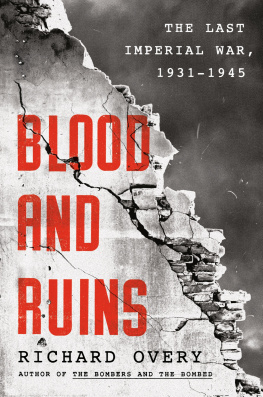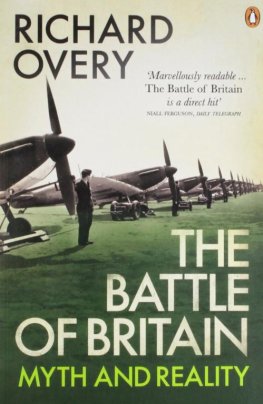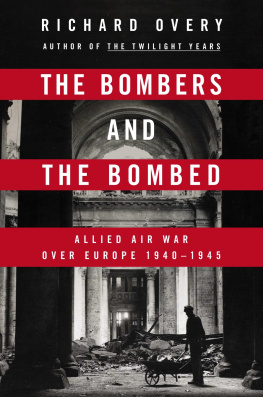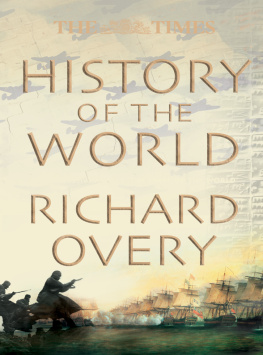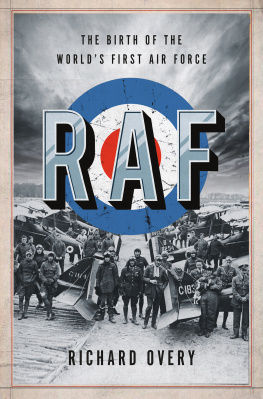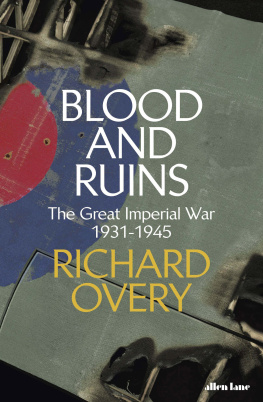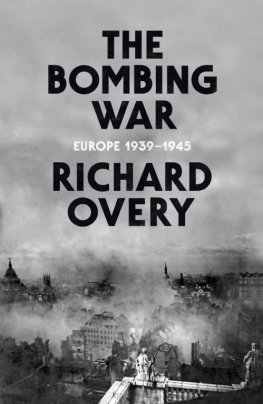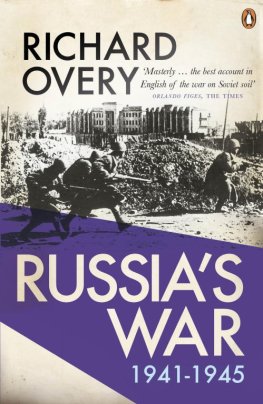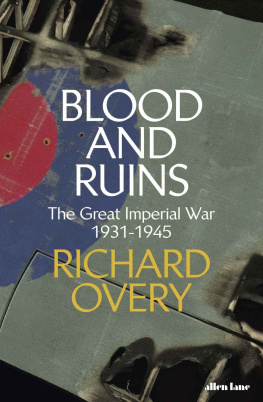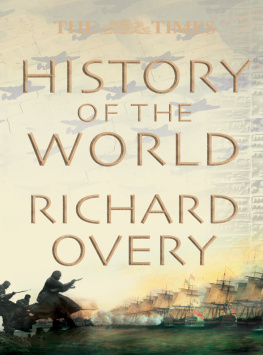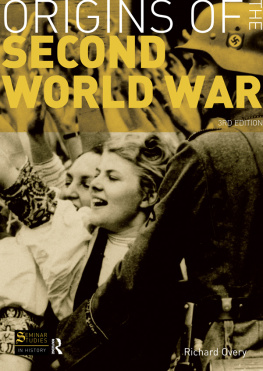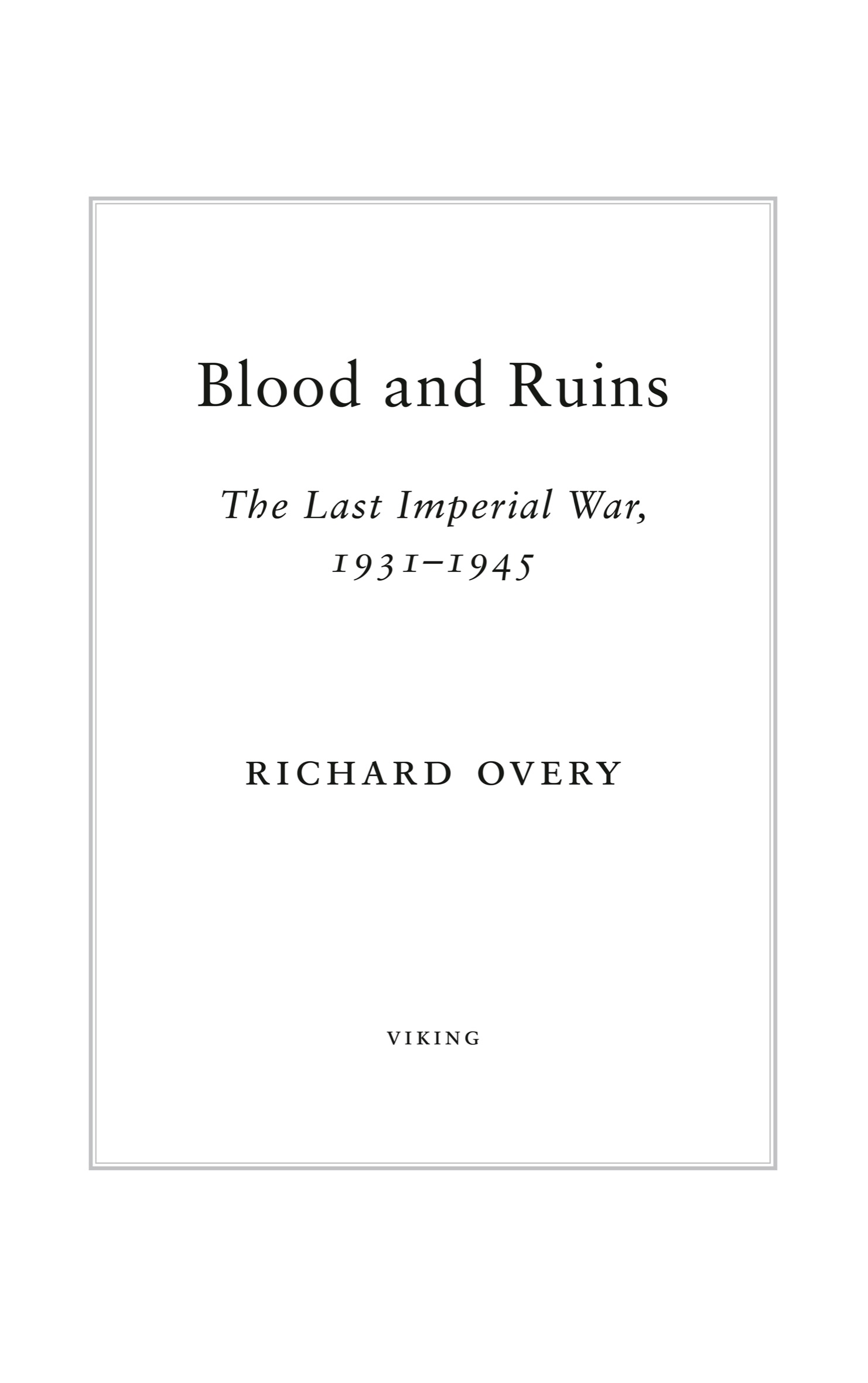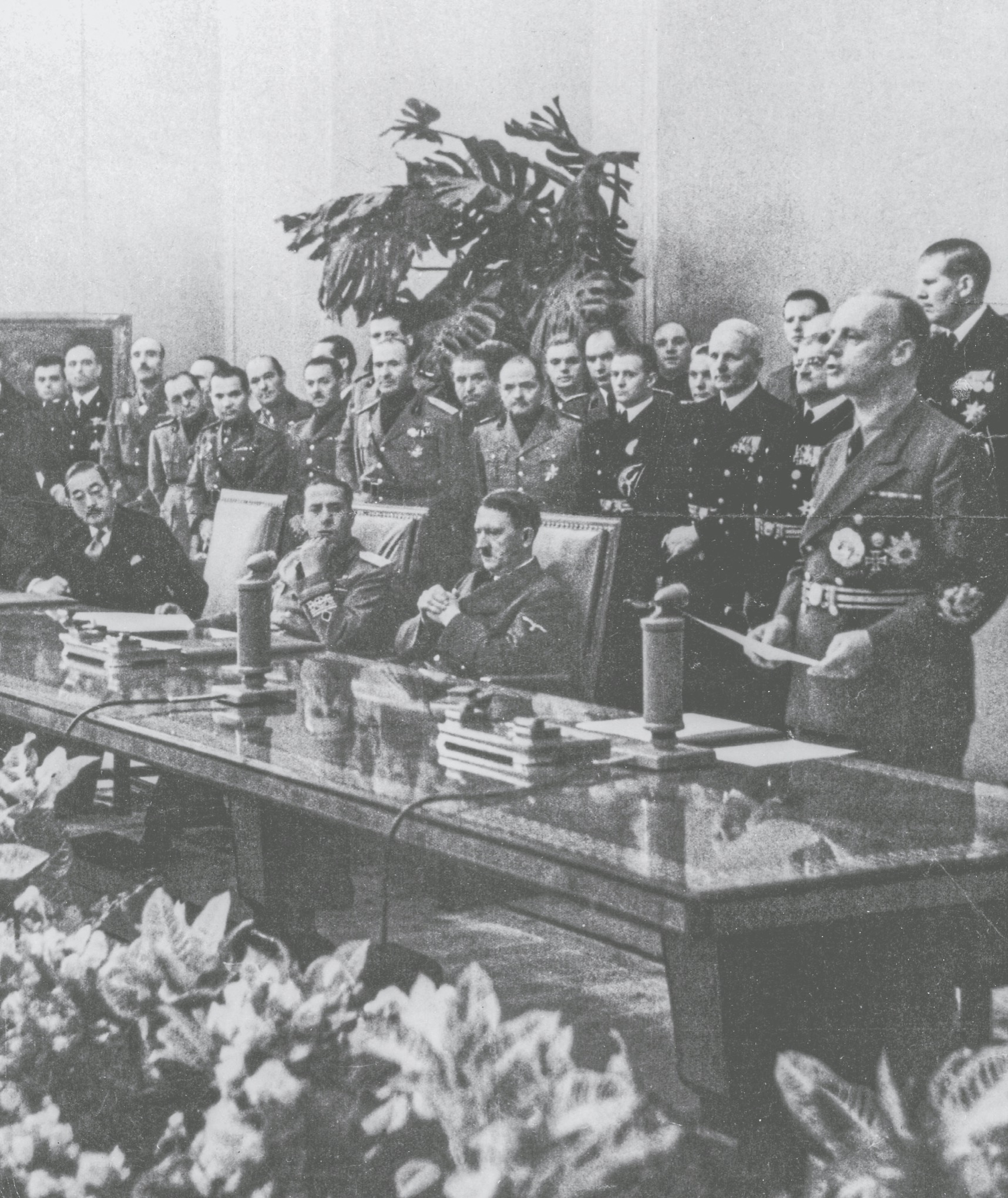VIKING
An imprint of Penguin Random House LLC
penguinrandomhouse.com
First published in hardcover in Great Britain by Allen Lane, an imprint of Penguin Random House Ltd., London, in 2021
First North American edition published by Viking, 2022
Copyright 2021 by Richard Overy
Penguin supports copyright. Copyright fuels creativity, encourages diverse voices, promotes free speech, and creates a vibrant culture. Thank you for buying an authorized edition of this book and for complying with copyright laws by not reproducing, scanning, or distributing any part of it in any form without permission. You are supporting writers and allowing Penguin to continue to publish books for every reader.
Illustration credits can be found on .
library of congress cataloging-in-publication data
Names: Overy, Richard, author.
Title: Blood and Ruins : The Last Imperial War, 19311945 / Richard Overy.
Other titles: Last Imperial War, 19311945
Description: First United States edition. | [New York] : Viking, [2022] | Includes bibliographical references and index.
Identifiers: LCCN 2022002771 (print) | LCCN 2022002772 (ebook) | ISBN 9780670025169 (hardcover) | ISBN 9780593489437 (ebook)
Subjects: LCSH: World War, 19391945.
Classification: LCC D743 .O937 2022 (print) | LCC D743 (ebook) | DDC 940.53dc23/eng/20220121
LC record available at https://lccn.loc.gov/2022002771
LC ebook record available at https://lccn.loc.gov/2022002772
Cover design: David Litman
Cover images: (wall) Yaorusheng / Getty Images; (clouds) Ingo Vogelmann / EyeEm / Getty Images
Adapted for ebook by Cora Wigen
pid_prh_6.0_139653426_c0_r0
We have entered the classical age of war on the largest scale, the age of scientific war with popular support there will be wars such as have never yet been on Earth.
Friedrich Nietzsche, 1881
Preface
In December 1945 the former American secretary of state, Cordell Hull, was awarded the Nobel Prize for peace. Too ill to attend, he wrote a short message endorsing the search for peace after the staggering ordeal of the most widespread and cruel war of all the ages. Hull was well known for his overblown rhetoric, but on this occasion the note he struck seems as pertinent today as it did seventy-five years ago. The era that Hull experienced saw global war on a hitherto unimaginable scale; the many conflicts that are now subsumed under the umbrella title of world war generated suffering, deprivation and death of almost limitless dimensions. There has been no war like it either before or since, not even the Great War. There may be more world wars in the future, capable, as Hull pointed out in 1945, of wiping out our civilization, but they have not happened yet.
A war so widespread and cruel challenges the historian in many ways. With the passage of time since the 1940s it has become progressively more difficult to imagine a world in which more than 100 million men (and a much smaller number of women) donned uniform and went off to fight using weapons whose destructive capability had been honed in the First World War and developed dramatically in the years that followed. It is just as difficult to imagine major states being able to persuade their populations to accept that up to two-thirds of the national product should be devoted to the purposes of war, that hundreds of millions should accept war-induced poverty and hunger, or that peacetime wealth and savings should be taken over and blown away by the insatiable demands of conflict. How hard it is, too, to comprehend the massive scale of deprivation, dispossession and loss suffered through bombing, deportation, requisitioning and theft. Above all, the war challenges our modern sensibilities in trying to grasp how widespread acts of atrocity, terrorism and crime could be committed by hundreds of thousands of people who were in most cases what the historian Christopher Browning has memorably described as ordinary men, neither sadists nor psychopaths. Common though acts of atrocity are every day in the civil wars and insurgencies of the present, the era of the Second World War witnessed a tidal wave of violent coercion, imprisonment, torture, deportation and mass, genocidal killing, carried out by uniformed servicemen, or security and police forces, or partisans and civilian irregulars, both men and women.
Once it was enough to explain the war as a military reaction by peace-loving nations to the imperial ambitions of Hitler and Mussolini in Europe and the Japanese military in East Asia. The standard Western accounts, together with the Soviet official histories of the war, have focused on the narrative of the military conflict between the Allied and Axis states. The history of the military conflict is now thoroughly understood and documented in many excellent accounts and for that reason will not be repeated here in full. The focus on the military outcome, important though it is, begs too many questions about the broader crisis that brought about war, about the differing nature of the many wartime conflicts, about the political, economic, social and cultural context of war, and finally about the unstable violence that continued long after the formal end to hostilities in 1945. Above all, the conventional view of the war understands Hitler, Mussolini and the Japanese military as causes of crisis rather than its effects, which is what they were. Proper sense cannot be made of the origins of the war and its course and consequences without understanding the broader historical forces that generated years of social, political and international instability worldwide from the opening decades of the twentieth century, and which eventually prompted the Axis states to undertake reactionary programmes of imperial territorial conquest. The defeat of these ambitions in turn slowly paved the way to a relative global stabilization and the final crisis years of territorial empire.
This new history of the Second World War is based on four main assumptions. First, that the conventional chronology of the war is no longer useful. Fighting began in the early 1930s in China and ended in China, South East Asia, Eastern Europe and the Middle East only in the decade after 1945. The warfare between 1939 and 1945 may provide the heart of the narrative, but the history of the conflict goes back at least to the Japanese occupation of Manchuria in 1931 and forward to the final insurgencies and civil wars prompted by the war, but unresolved in 1945. Moreover, the First World War, and the violence that preceded and followed it, profoundly influenced the world of the 1920s and 1930s, supporting the contention that little is to be gained by separating the two giant conflicts. Both can be seen as stages of a second Thirty Years War about the reordering of the world system in a final stage of imperial crisis. The structure of the book reflects these less-conventional temporal perspectives. There is much on the 1920s and 1930s, without which the nature of the global war and the way it was fought and understood at the time cannot be properly explained.
Secondly, that the war should be understood as a global event, rather than one confined to the defeat of the European Axis states with the Pacific War as an appendix. The unstable regional zones in Central Europe, the Mediterranean and Middle East, and in East Asia, all fed into the wider crisis of global stability and explain why warfare reached not just the major states but areas as remote as the Aleutian Islands in the northern Pacific, Madagascar in the southern Indian Ocean, or the island bases of the Caribbean. The Asian war and its consequences were as important to the creation of the post-war world as the defeat of Germany in Europe, arguably more so. Here the creation of modern China and the unravelling of the colonial empires went hand-in-hand across the era of world wars.

